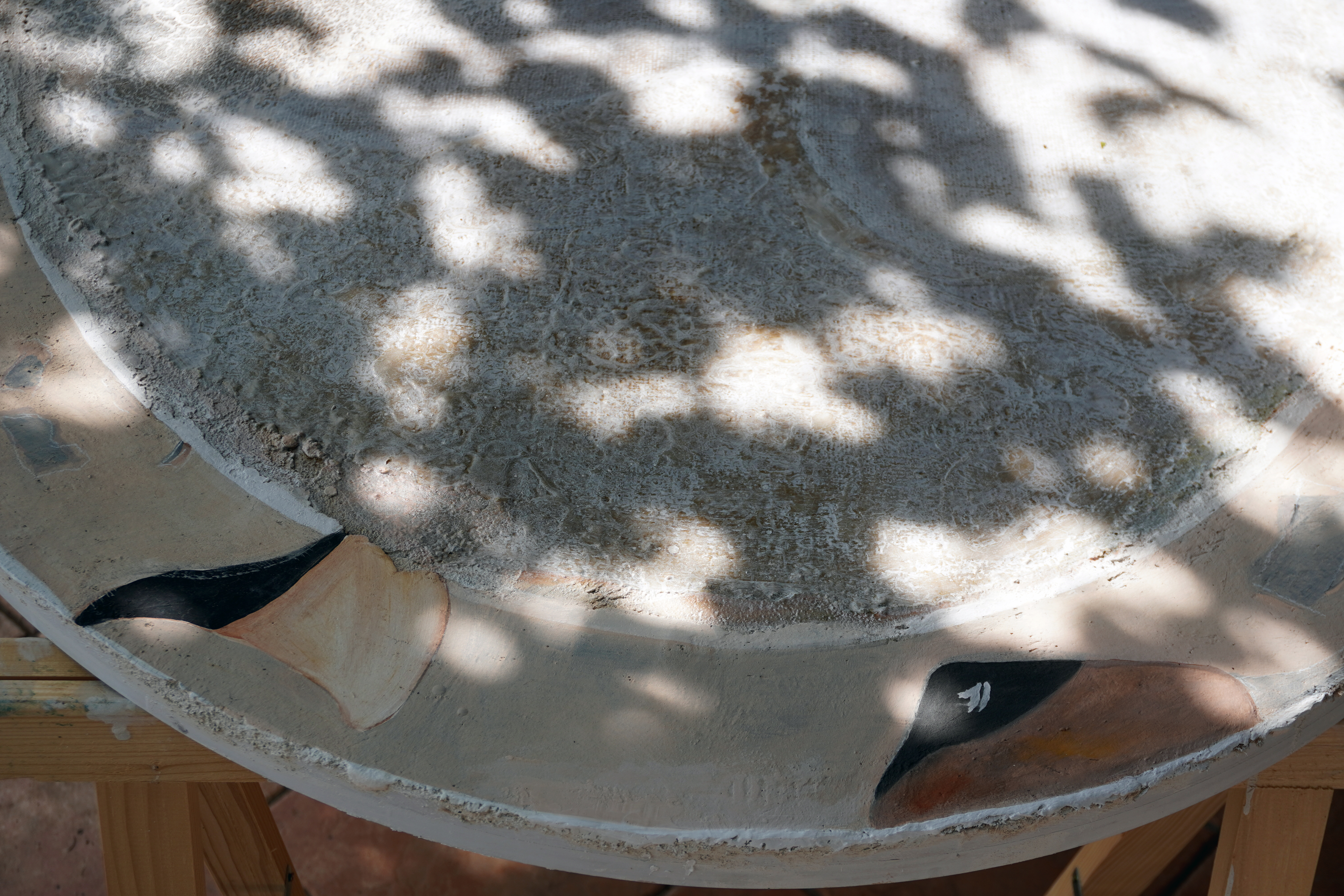Day's Work
Andrea Zabric
14.11. – 23.12.2025
Opening: Friday, 14.11.2025, 6–8 pm
Marking a day’s edge
Constraining one’s work to an arbitrary timeframe comes with the assumption that the outcome will be surprising – not necessarily different from one’s habitual approaches but which rather accentuates the gestures that have solidified to the point of becoming transparent, and which are unlikely to be disturbed under pressure. In fresco, this logic appears to cultivate analogies in the technique itself – work contained within its daily limits (not-yet-dry and not-yet-dark) carries with it a promise of permanence – like a habit, it goes on without much effort. Beyond the day’s edges, however, additions lose their hold. They settle on the surface like chance marks or passing encounters – striking for a moment, but too fragile to remain. When a day elapses at the surface’s edge, time then becomes both opaquely deep and laid out horizontally – one day next to another rather than layered on top. It is in this sequentiality that edges are emphasized, almost as if reluctant to touch. They behave like bodies holding back, memories carved in stone, cues that the time for real change might have already passed. Days build walls. The narrow stretch of work in them outlines a reminder that forms are not endlessly malleable and that decisions carry consequences – saying yes to one possibility means saying no to another. Yet such reminders do not bind and can (like protocols) be pushed against. It means that both the yes and the no can still be held within a fresco (like all the fictions of its own making); but where they meet, the seams will appear as cracks, not folds. To read this rigidity primarily as a refusal, an unwillingness to mend or meet, would be to overlook a more central tendency that Andrea Zabric brings about in all her works – namely, that they open up and allow for encounter precisely where it seems least likely. It is as if they harden only to challenge the hardness itself. Unlike paintings, where pigments are bound by varnish and layers seep into one another, a fresco is held together by the very substance that also renders it non-transparent. It meets you head-on, flat and opaque, yet reveals itself at its most vulnerable - where it cracks, flakes and peels away. More importantly still, frescos extend beyond themselves: more than varnished layers, they are urged to reach across their own frames. Each one (the ellipse, the window, the wall) can only come into being alongside another – they exchange glances as much as they are vessels for the space surrounding them, catching a fallen leaf, or a fig that ripened sooner than expected. After all, to be set in stone is a metaphor undone by the very space that shaped these works – a karst landscape, abundant in limestone, continuously transformed and hollowed by water, a terrain that seems opaque and immovable, though it is in fact porous and riddled with passages. When streams cut through it, they carry off the chalky stone, only to deposit it in the soft, glistening folds of the caves below – an encounter as unexpected as plaster meeting wax.
Text by Ana Likar
Exhibition in cooperation with PD - Painting Diary

